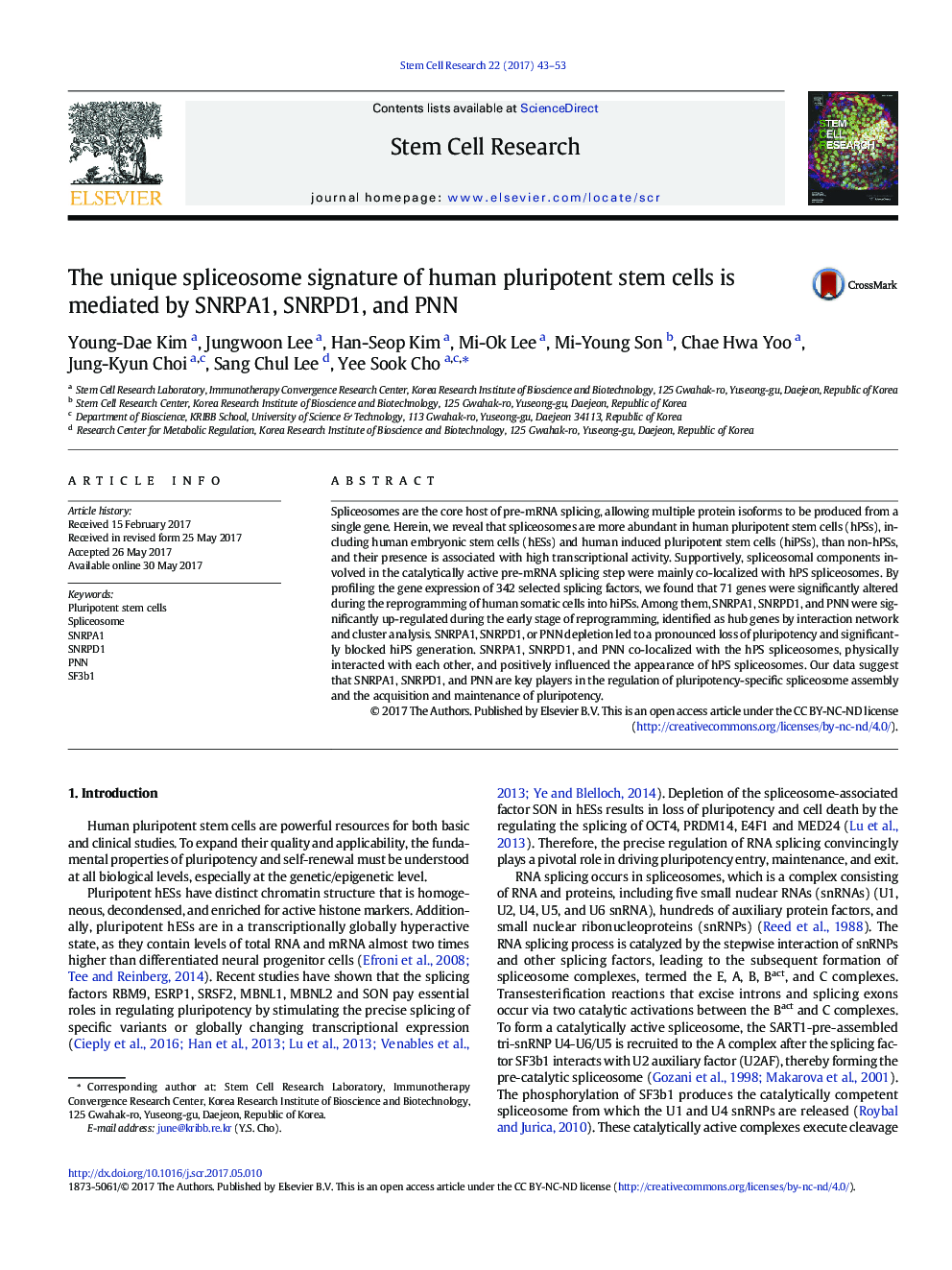| Article ID | Journal | Published Year | Pages | File Type |
|---|---|---|---|---|
| 5522809 | Stem Cell Research | 2017 | 11 Pages |
â¢Catalytic active/activated spliceosomes are abundantly observed in human pluripotent stem cells.â¢Expression of splicing regulatory genes is increased in a pluripotency dependent manner.â¢SNRPA1, SNRPD1, and PNN interact with each other and affect pluripotency through regulation of spliceosome assembly.
Spliceosomes are the core host of pre-mRNA splicing, allowing multiple protein isoforms to be produced from a single gene. Herein, we reveal that spliceosomes are more abundant in human pluripotent stem cells (hPSs), including human embryonic stem cells (hESs) and human induced pluripotent stem cells (hiPSs), than non-hPSs, and their presence is associated with high transcriptional activity. Supportively, spliceosomal components involved in the catalytically active pre-mRNA splicing step were mainly co-localized with hPS spliceosomes. By profiling the gene expression of 342 selected splicing factors, we found that 71 genes were significantly altered during the reprogramming of human somatic cells into hiPSs. Among them, SNRPA1, SNRPD1, and PNN were significantly up-regulated during the early stage of reprogramming, identified as hub genes by interaction network and cluster analysis. SNRPA1, SNRPD1, or PNN depletion led to a pronounced loss of pluripotency and significantly blocked hiPS generation. SNRPA1, SNRPD1, and PNN co-localized with the hPS spliceosomes, physically interacted with each other, and positively influenced the appearance of hPS spliceosomes. Our data suggest that SNRPA1, SNRPD1, and PNN are key players in the regulation of pluripotency-specific spliceosome assembly and the acquisition and maintenance of pluripotency.
